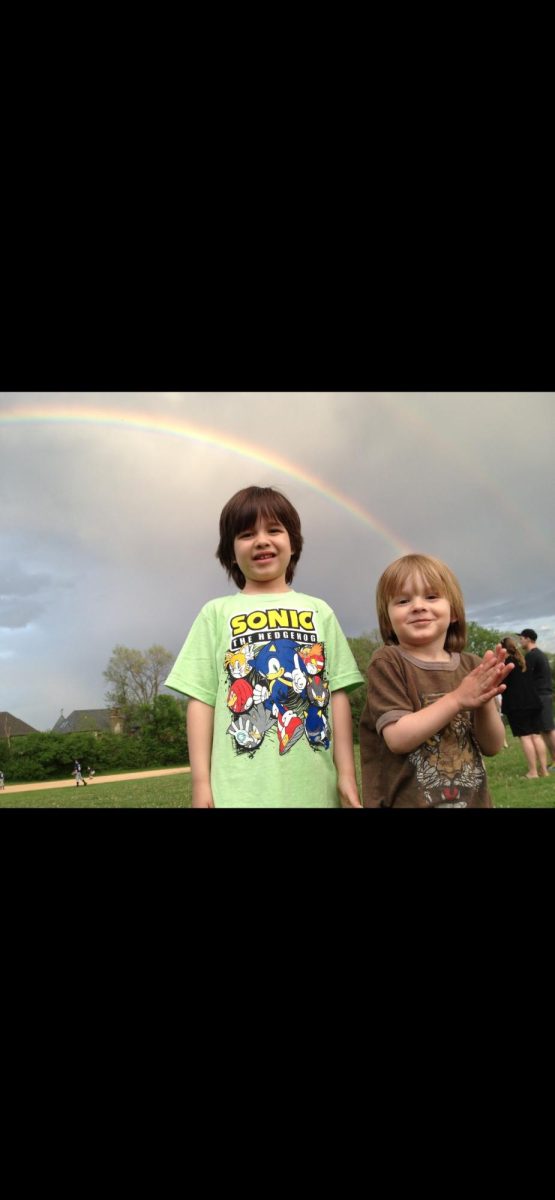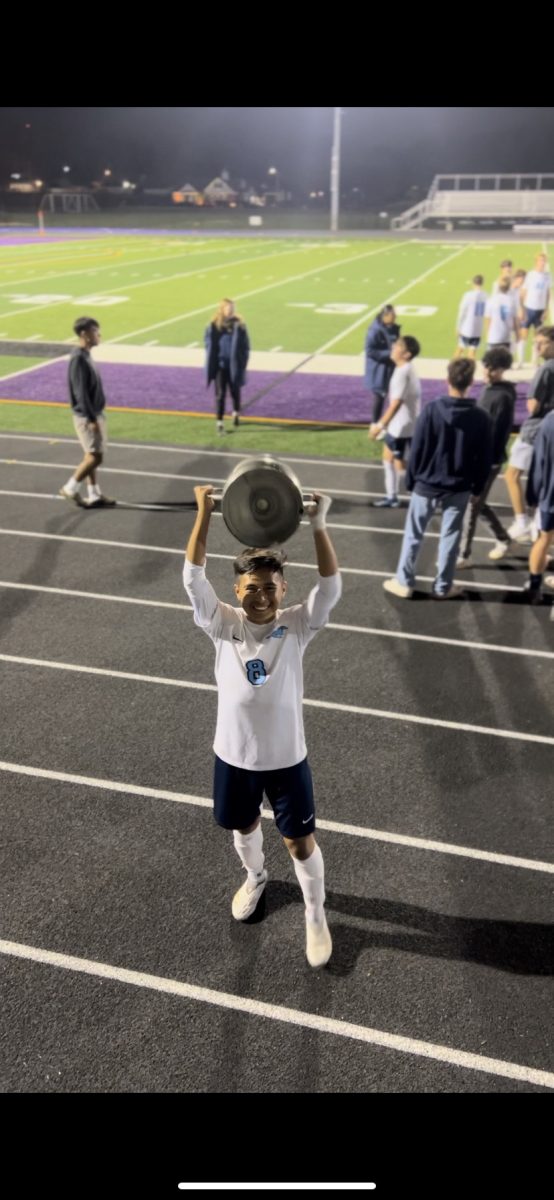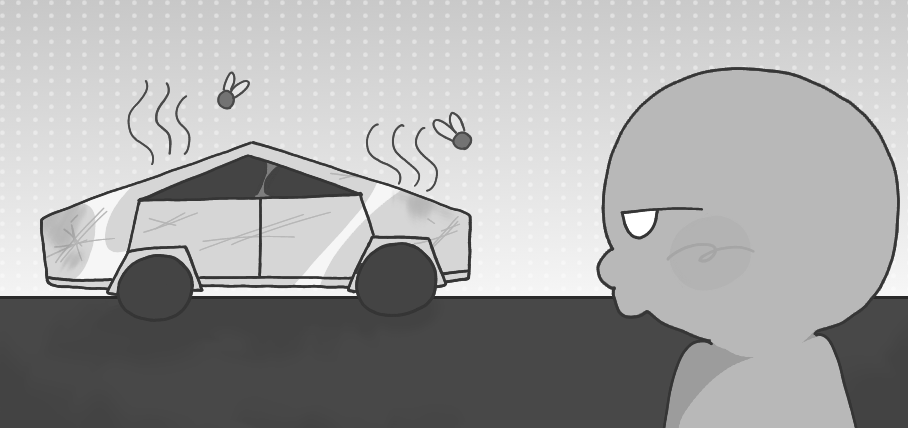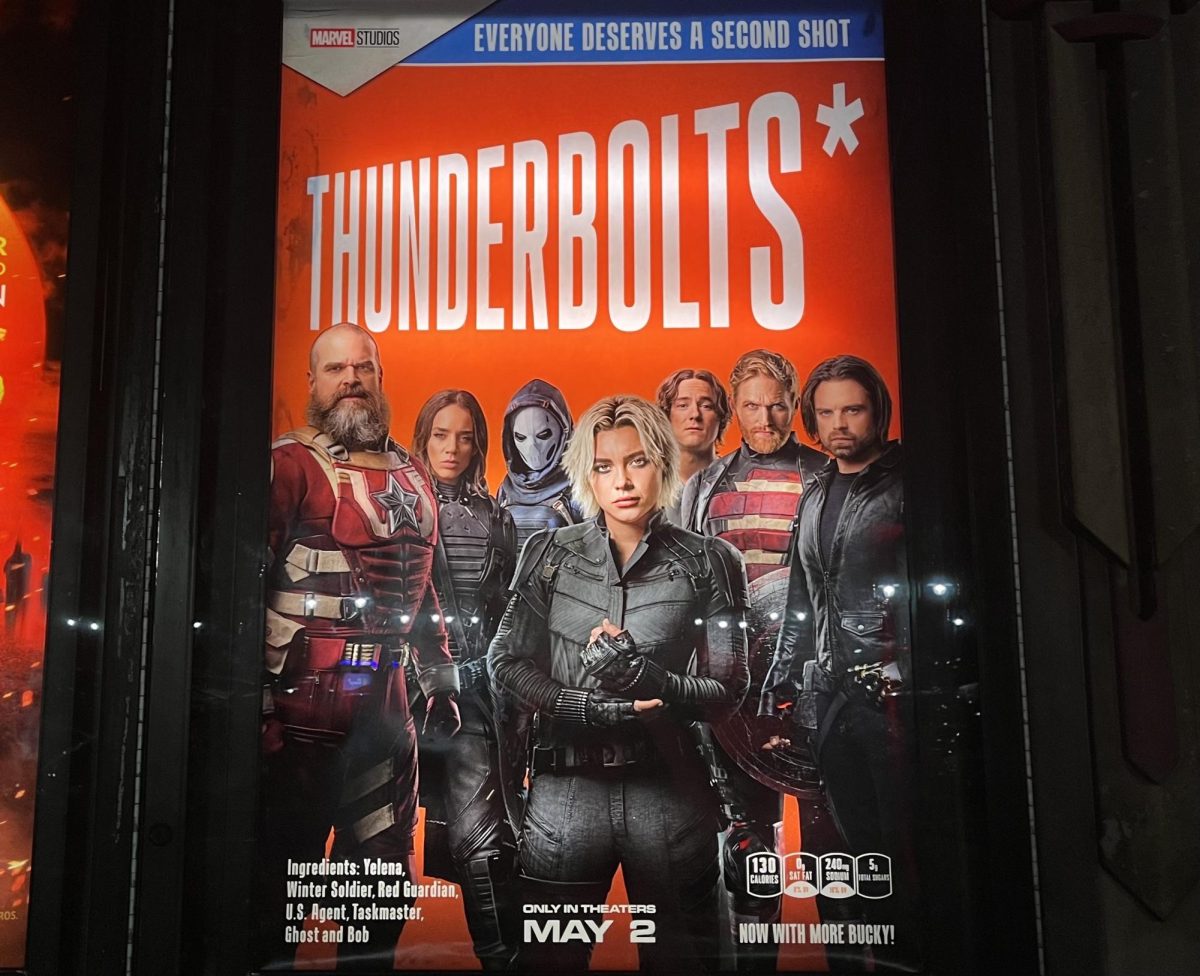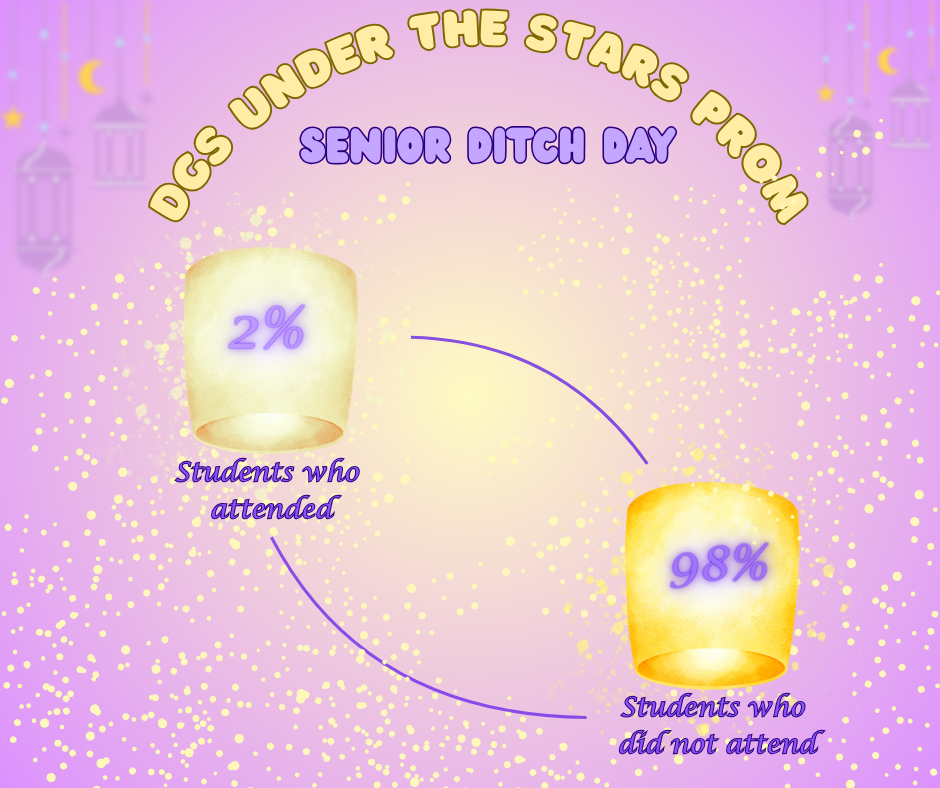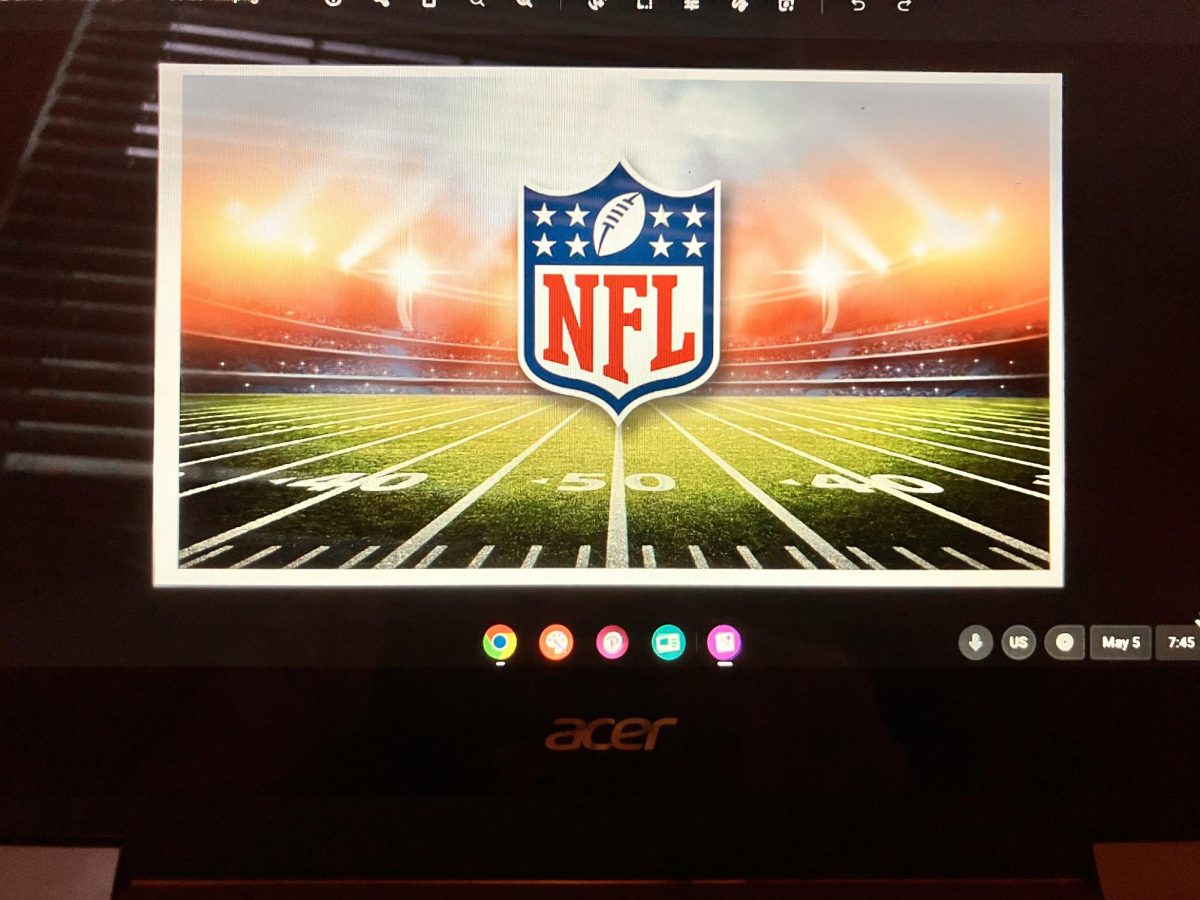Over the past year, Junior Zoya Siddiqui has worked on a groundbreaking research project surrounding the Muon Flux with a QuarkNet team out of Fermilab. Recently, her team’s research on Muon Flux recovery has been well-received by various research organizations.
This past Friday, Siddiqui and her team were judged by a panel of researchers and university faculty in the 24th Annual High School Research Symposium hosted by Illinois State University.
Previously, her QuarkNet team presented at the American Association for Physics Teachers conference during the week of Jan. 18-24, 2025.
During their recent presentation at an AAPT seminar, Zoya was featured as the first author for her team’s research.
“When I was asked to be the first author, it felt like all my hard work was finally getting me somewhere,” Siddiqui said. “Being able to write as the first author of my own research project felt both like an accomplishment and the start of something greater.”
Zoya’s QuarkNet team received an honorable mention for their presentation and research.
Having started her journey at DGS’s research club, Siddiqui and fellow members of the research club, Junior Evangline Selking and Sydney Stapleton, joined the Fermilab QuarkNet team together and now work together on a frequent basis.
Zoya’s research club mentor, science teacher Marybeth Senser, has sponsored Zoya and her fellow club members throughout their research. Senser introduced the DGS research club and its participants to QuarkNet to stimulate student opportunities for research.
“QuarkNet is an international collaboration of professional scientists who engage high school teachers and students in authentic modern physics research. I connected Zoya with the Chicago regional QuarkNet group via the DGS research club,” Senser said.
Senser elaborates on the perks of working with Quarknet.
“The QuarkNet mentors and I arranged a summer workshop and periodic meetings throughout the school year to facilitate data collection and analysis. The Quarknet mentors and I suggested a research question, taught Zoya and her peers how to use the equipment, and gave feedback on their analysis and presentations,” Senser said.
Zoya’s research team is also composed of students from New Trier High School and Rochelle Zell Jewish High School.
At the start of August 2024, Siddiqui and the QuarkNet team began their research on the Muon Flux through a series of Fermilab-hosted conferences and thereafter the development of Muon detectors.
A muon is a subatomic particle that is described as a heavy electron. The muon flux tells how many muons are flowing past us at any given time. By detecting how many muons are coming off in sunlight, there is potential to study the dynamics of the solar atmosphere further.
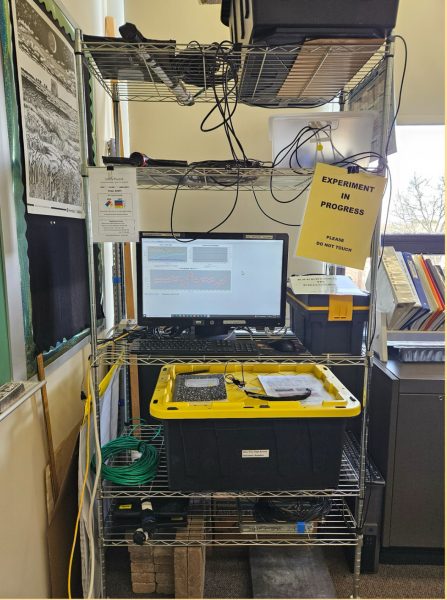
Siddiqui describes the basics of her research.
“We focused on characterizing the different aspects of muon flux, such as onset, onset is essentially the initial trigger/trigger conditions when detectors first detect a CME event. CME is short for Coronal Mass Ejection, which is where a majority of Muon rays come from. We also looked at the recovery of muon flux, which is essentially what my entire research is on,” Siddiqui said.
Siddiqui’s research involves detecting muons from solar events to determine the triggers and conditions of the solar event.
“During these CME events, the detectors around the world shoot up in muon flux essentially as the event passes the flux starts to head back to a ‘baseline’, my research focuses on how long it takes for flux to reach this baseline we deemed this a ‘recovery’ in my research and if there is any correlation between magnitude of CME event and recovery,” Siddiqui said.
Through shared QuarkNet data and the data from her team’s detectors, Siddiqui’s group has been able to develop valuable data conclusions about muon flux recovery.
“We concluded that planetary k-index values below 4 did not experience a forbush decrease. When geomagnetic activity is mild (kp index lower than 4), there is no noticeable drop in cosmic ray intensity, or in other words, no Forbush decrease occurs,” Siddiqui said.
Siddiqui’s research team found that more powerful geomagnetic activity from the sun is needed to decrease cosmic radiation intensity.
By October of next year, Siddiqui and her local FermiLab team hope to have their research published in the form of a research paper on the topic of Muon Flux recovery through the Journal of Undergrate Research in Physics and Astronomy.
“We are in the process of publishing through the Journal of Undergraduate Research of Physics and Astronomy. The name [of the paper] isn’t finalized yet, but we hope to get it published online by October or November, and published in an official issue [of JURPA’s magazine] in the Summer when the physical copies come out,” Siddiqui said.
Research club member of the QuarkNet group, Selking, reflected on Siddiqui’s contributions to the project.
“One of the main contributions Zoya made was organizing a lot of the data during the summer. While I worked on gathering relevant literature for our experiment, she worked on consulting data from the “e-Lab,” transferring it to a Google Sheet, and analyzing the data. This was crucial in finding out our next steps in this experiment, since at the beginning of the summer, our team had only just met each other, and Zoya and I had only just familiarized ourselves with the nature of the experiment,” Selking Said.
Selking continued to talk about her joint research with Siddiqui.
“Zoya has a knack for asking great questions and pushing the scientific conversation further–she’d always be asking Mrs. Senser, our research advisor, for more information. Our team greatly benefited from the depth this brought to certain experimental considerations,” Selking said.
Selking expands on the opportunities granted to them from the growth of their research project.
“Zoya and I recently had the privilege of presenting our scientific research at St. Louis, at the American Association of Physics Teachers’ conference. While I prepped a poster, Zoya prepared a talk- so we’d compare notes and make sure we were both on the same page as what we would say. And while we each were independently presenting our research, this reminded me that the most important part of research is collaboration,” Selking said.
Selking shared her idea of what the most important part of researching is.
“Research isn’t done in isolation, but instead with the support of dedicated team members- Zoya and I have been that to each other as both of us navigate the busyness of schoolwork and extracurriculars,” Selking said.
Senser believes that Siddiqui has a promising future in STEM.
“I think the combination of Zoya’s skills in STEM and communication is a rare and underappreciated combination. We have a lot of great scientists here at DGS, and a champion speech team. Zoya brings those two worlds together. The global scientific community only advances when scientists share great ideas with one another. Zoya is uniquely skilled in both generating those great ideas and communicating them effectively with the scientific community.
Having finished most of the data analysis on the QuarkNet project, Siddiqui reflects on her progress and potential as a researcher.
“Working on this project really opened my eyes towards the world of research. As one of my mentors, Mr. Unterman, told me after I presented my research at AAPT, ‘once you get bit by the research bug, you never go back.’ And I can’t help but agree,” Siddiqui said.






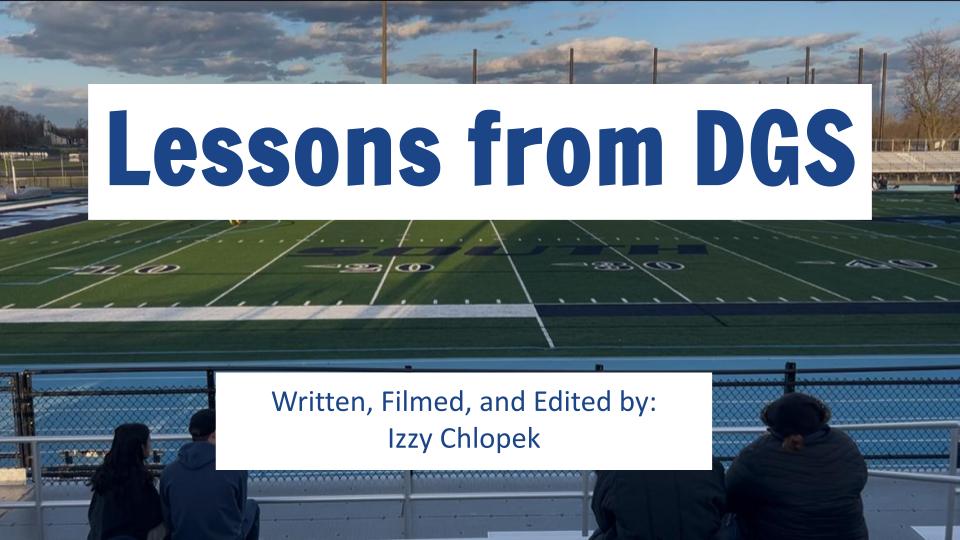

![In this documentary, you will learn how violins are made. All music is in the public domain:
Music Produced by Deutsche Grammophon, Medici TV, Heifetz Institute, and Queen Elisabeth competition
Paganini, Caprice No. 24 [Song recorded by Jasha Heifetz]. Heifetz Institute. (Original work published 1817)
Paganini, Caprice No. 24 [Song recorded by Jasha Heifetz]. Heifetz Institute. (Original work published 1817)
Bartok, Sonata No.1 for Solo Violin [Song recorded by Kevin Zhu]. Queen Elizabeth Competition. (Original work published 1944)
Paganini, Violin Concerto no. 1 [Song recorded by Philippe Hirshhorn]. Queen Elizabeth Competition. (Original work published 1819-1825)](https://southblueprint.com/wp-content/uploads/2025/05/Screenshot-2025-05-07-122429-1200x668.png)
